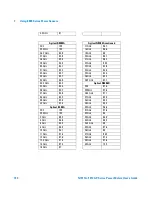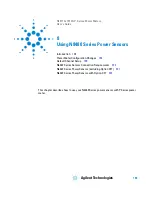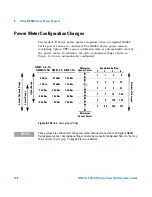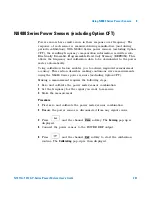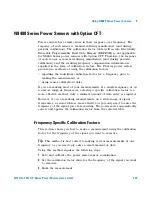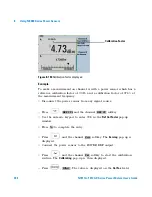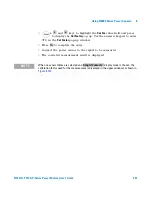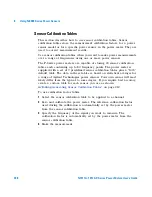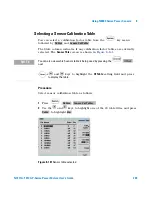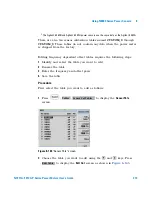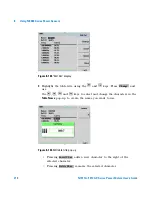
Using N8480 Series Power Sensors
8
N1911A/1912A P-Series Power Meters User’s Guide
203
N8480 Series Power Sensors with Option CFT
Power sensors have small errors in their response over frequency. The
response of each sensor is measured during manufacture (and during
periodic calibration). The calibration factor table written into Electrically
Eraseable Programmable Read Only Memory (EEPROM) is not applicable
for N8480 Series power sensors with Option CFT. Therefore, the response
of each sensor is measured during manufacture (and during periodic
calibration) and the resulting frequency compensation information is
supplied in the form of calibration factors. The P- Series power meters
provide two methods of using the calibration factors:
•
inputting the individual calibration factor for a frequency prior to
making the measurement, or
•
using sensor calibration tables.
If you are making most of your measurements at a single frequency, or in
a narrow range of frequencies, entering a specific calibration factor is a
more effective method. Only a minimal amount of data entry is required.
However, if you are making measurements on a wide range of signal
frequencies, a sensor table is more effective as you only need to enter the
frequency of the signal you are measuring. The power meter automatically
selects and applies the calibration factor from the selected table.
Frequency Specific Calibration Factors
This section shows you how to make a measurement using the calibration
factor for the frequency of the signal you want to measure.
Tip
This method is best suited to making several measurements at one
frequency as you need only enter a small amount of data.
Using this method requires the following steps:
1
Zero and calibrate the power meter/sensor combination.
2
Set the calibration factor value for the frequency of the signal you want
to measure.
3
Make the measurement




